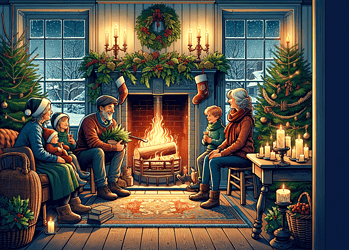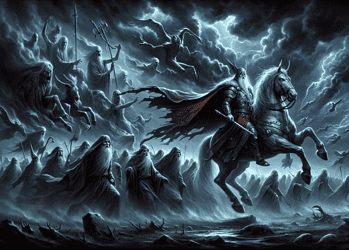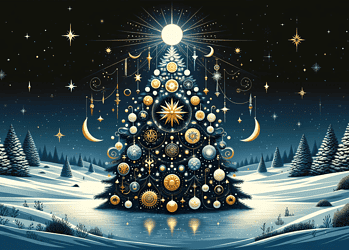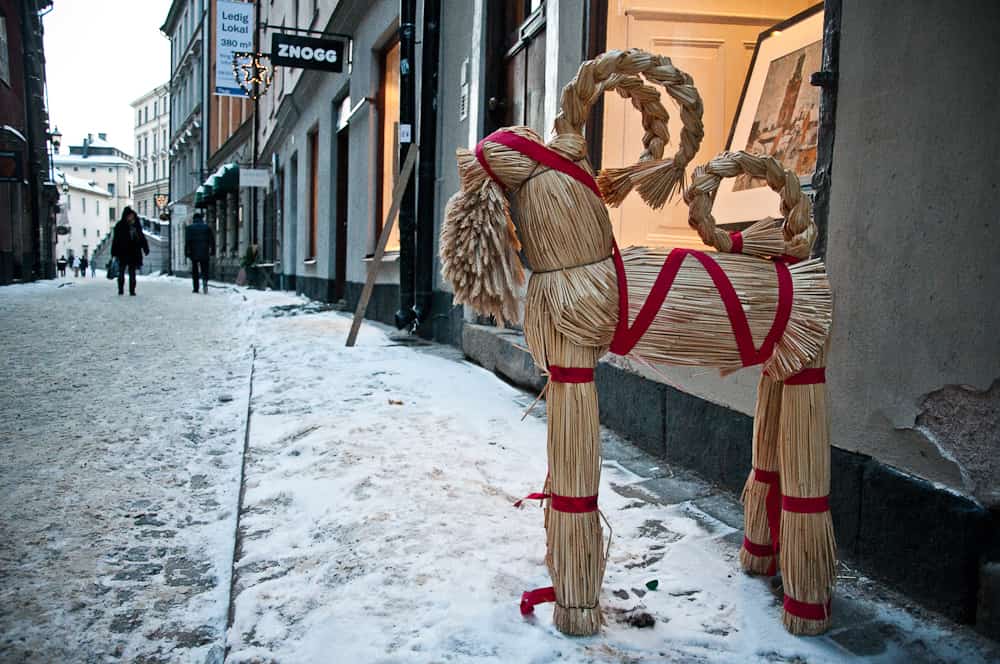
The Yule Goat is an emblem of Yuletide. It is deeply ingrained in the fabric of winter traditions and the enduring legacy of Norse mythology. Yule is a pagan celebration of the winter solstice in countries like Sweden, Finland, or Norway. So let’s dive into the mythological origins of the Yule Goat, its transformation through various eras, and its contemporary significance in the holiday season.
The Mythical Beginnings: Thor and His Goats
At the heart of the Yule Goat’s story lies its connection to Thor, the mighty thunder god of Norse mythology. Thor, renowned for traversing the sky in a chariot pulled by two magnificent goats, Tanngrisnir and Tanngnjóstr, symbolized strength and protection. Thor was the strongest Norse god, and nothing about him was ordinary.
Thor, the son of Odin and the earth goddess Fjörgyn, is the god of thunder, lightning, storms, oak trees, strength, the protection of mankind, and also hallowing and fertility. His hammer, Mjölnir, is one of the most fearsome and powerful weapons in Norse mythology, known for its ability to return to Thor’s hand after being thrown.
Thor’s goats were not ordinary creatures; they possessed the magical ability to be feasted upon by the family and resurrected the following day, provided their bones remained unharmed. This cycle of death and rebirth was reflective of the natural order, resonating with the themes of harvest and renewal, central to many ancient traditions — particularly around the Winter Solstice.
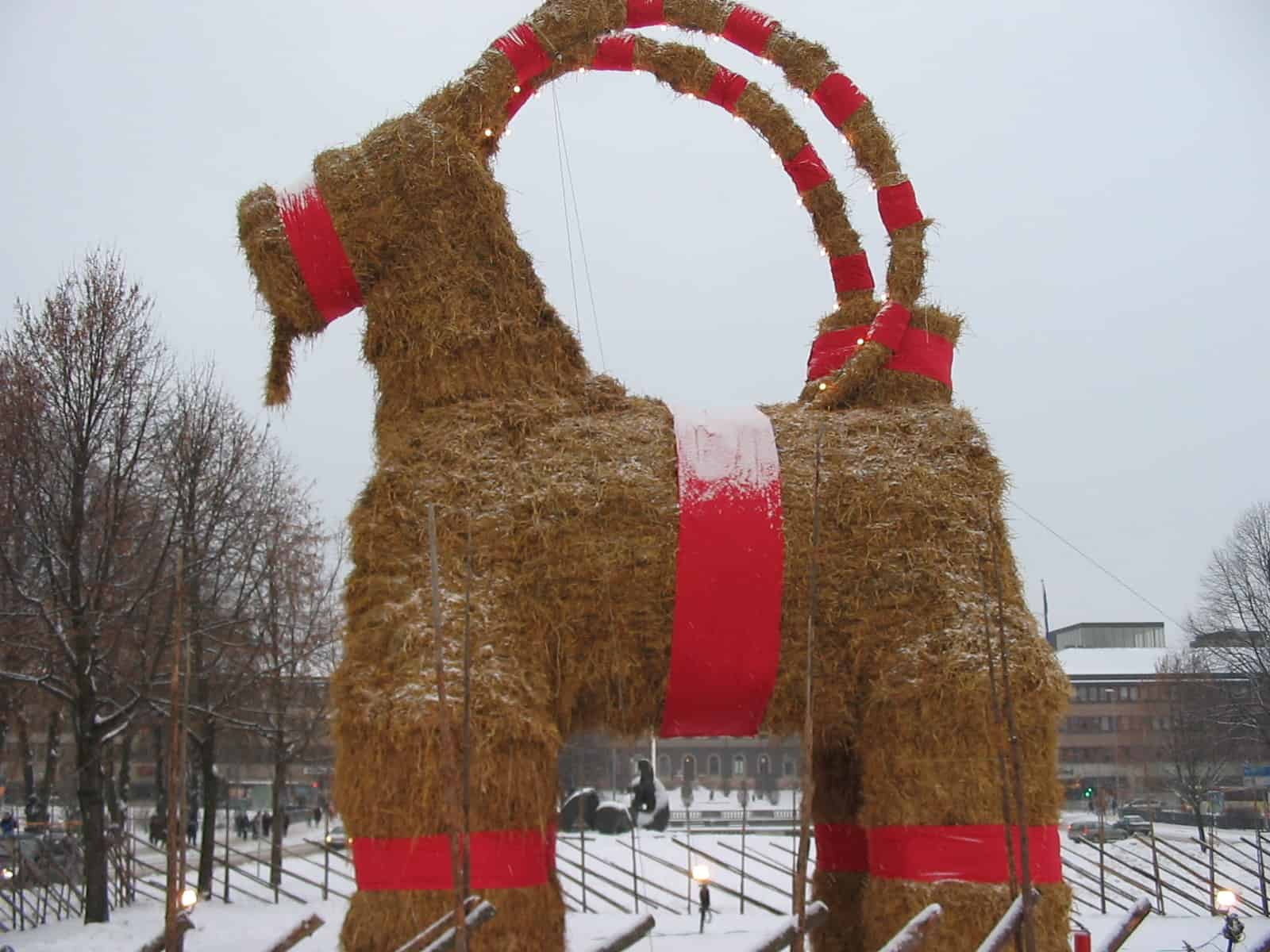
However, the Yule goat’s origins may go back even more, to ancient Pagan festivals. It appears to be linked to the Sun’s annual re-entry into the astrological sign of Capricornus, and a kid goat sacrifice was made in honor of the Norse god Njord or Saturn. But instead of killing a goat, some communities just make a hay goat bonfire. That’s one way of celebrating the Yule Goat, but not the only way.
The celebration also to ancient proto-Slavic beliefs where the Koliada (Yule) festival honors the god of the fertile sun and the harvest. A proto-Slavic god, Devac (also known as Dazbog or Dažbog), was represented by a white goat. Consequently, people attending the Koliada festivals always had a person dressed as a goat. This is still the in some Eastern European countries. In the modern version, someone dresses as a goat, performs a dance, song, or ritual, and demands offerings in the form of presents.
The Yule Goat in Pre-Christian Traditions
So the goat theme appears in multiple cultures.
As Norse mythology wove its way into the daily lives of people, the Yule Goat found its place in pre-Christian winter celebrations. It evolved from a divine symbol to a more earthly one, becoming a harbinger of the harvest season. Men, forming groups, would don goat skins and travel from house to house, a practice known as “julebukking.” In this tradition, the goat-men would entertain with songs and skits in exchange for food, a custom that fostered a sense of celebration and community spirit during the harsh winter months.
Christian Era and the Yule Goat’s Transformation
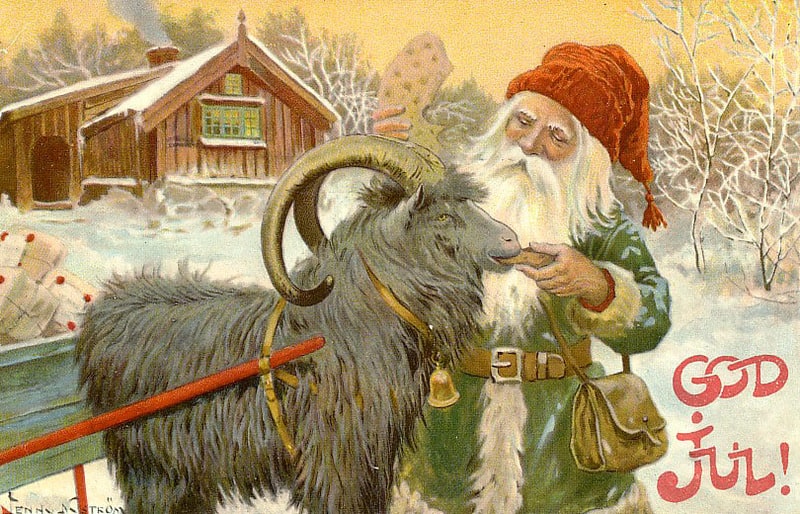
With the spread of Christianity, the Yule Goat underwent a significant transformation, especially in Scandinavian countries like Sweden. It began to intertwine with Christian festivities, merging with the figure of Santa Claus and other holiday symbols like the advent calendar. However, the goat’s pagan roots and beliefs remained strong, as it continued to play a prominent role in Christmas celebrations. The tradition of making straw Yule Goats, adorned with red ribbons and used as decorations, emerged during this time.
Christians tried to incorporate this theme into their beliefs. The folklore gets murky, but the god Odin (Thor’s father) and Saint Nicholas, a prominent figure in Christianity, become intertwined — possibly due to their role as gift-givers.
The Gävle Goat
In modern times, the Yule Goat has taken on a new dimension, particularly in Gävle, Sweden. Here, the construction of a giant straw goat has become an anticipated holiday season event, drawing attention from around the world. The Gävle Goat’s size and the tradition surrounding it reflect the enduring popularity of the Yule Goat. Despite occasional acts of vandalism, the community’s commitment to the annual celebration of rebuilding the goat each year highlights the resilience of this ancient symbol.
The Yule Goat’s Comeback
Nowadays, the Yule goat has made a resurgence in neo-Yule celebrations, but also in traditional celebrations. The Julebukking tradition is still prevalent in some Scandinavian parts. In the tradition, a group of people wearing masks and costumes (Julebukkers) go door to door, where neighbors receiving them attempt to identify who is under the disguise. In one version of Julebukking, people go door to door singing Christmas songs — a bit like caroling. After they have sung, they are usually rewarded with candy.
The journey of the Yule Goat, from the mythical skies of Norse gods to the festive streets of modern cities, encapsulates the human penchant for storytelling and the preservation of traditions. It reminds us of our shared history and the universal desire to celebrate life and community, especially in the face of winter’s darkness. As we continue to embrace these age-old customs, the Yule Goat stands as a symbol of continuity, linking the past, present, and future in a never-ending cycle of cultural evolution.

